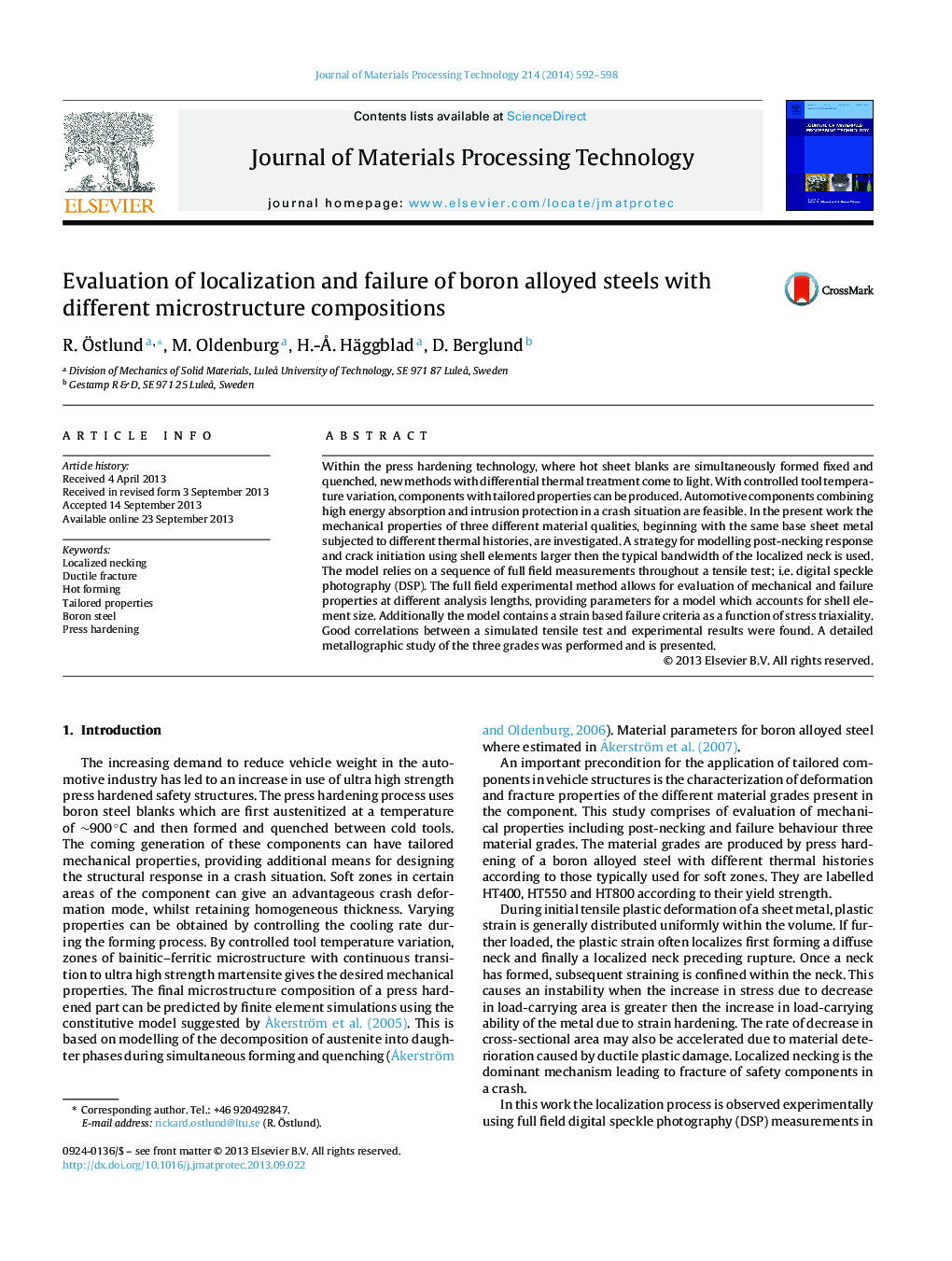| Article ID | Journal | Published Year | Pages | File Type |
|---|---|---|---|---|
| 10417459 | Journal of Materials Processing Technology | 2014 | 7 Pages |
Abstract
Within the press hardening technology, where hot sheet blanks are simultaneously formed fixed and quenched, new methods with differential thermal treatment come to light. With controlled tool temperature variation, components with tailored properties can be produced. Automotive components combining high energy absorption and intrusion protection in a crash situation are feasible. In the present work the mechanical properties of three different material qualities, beginning with the same base sheet metal subjected to different thermal histories, are investigated. A strategy for modelling post-necking response and crack initiation using shell elements larger then the typical bandwidth of the localized neck is used. The model relies on a sequence of full field measurements throughout a tensile test; i.e. digital speckle photography (DSP). The full field experimental method allows for evaluation of mechanical and failure properties at different analysis lengths, providing parameters for a model which accounts for shell element size. Additionally the model contains a strain based failure criteria as a function of stress triaxiality. Good correlations between a simulated tensile test and experimental results were found. A detailed metallographic study of the three grades was performed and is presented.
Related Topics
Physical Sciences and Engineering
Engineering
Industrial and Manufacturing Engineering
Authors
R. Ãstlund, M. Oldenburg, H.-Ã
. Häggblad, D. Berglund,
